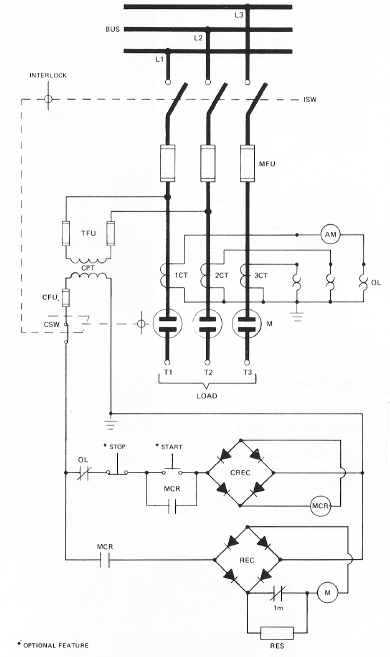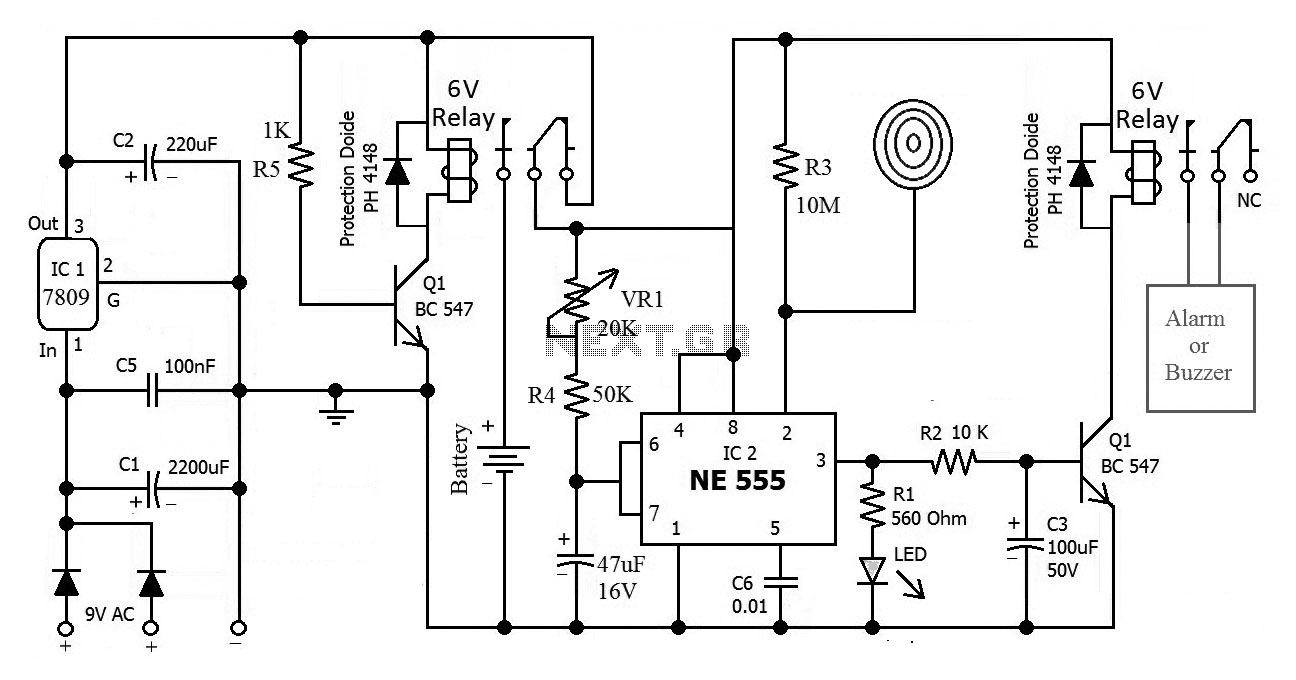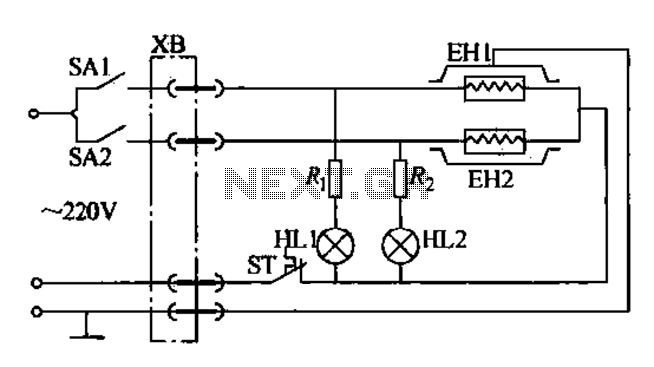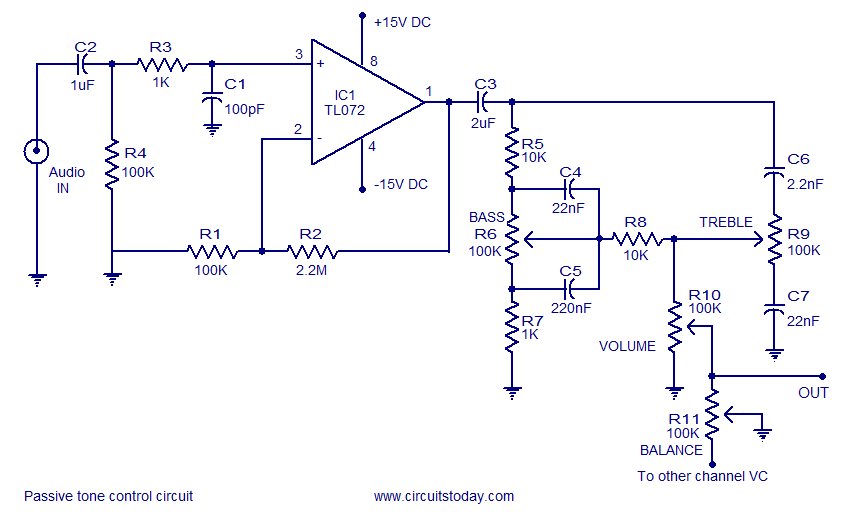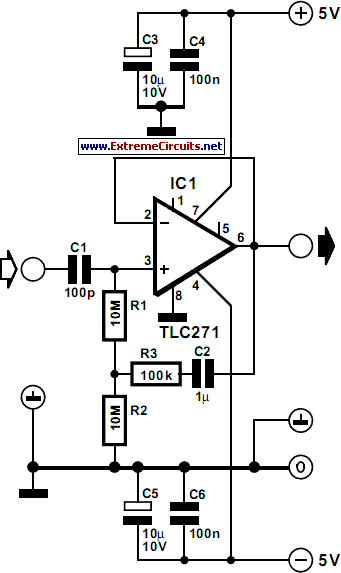
Electric fence control circuit 5
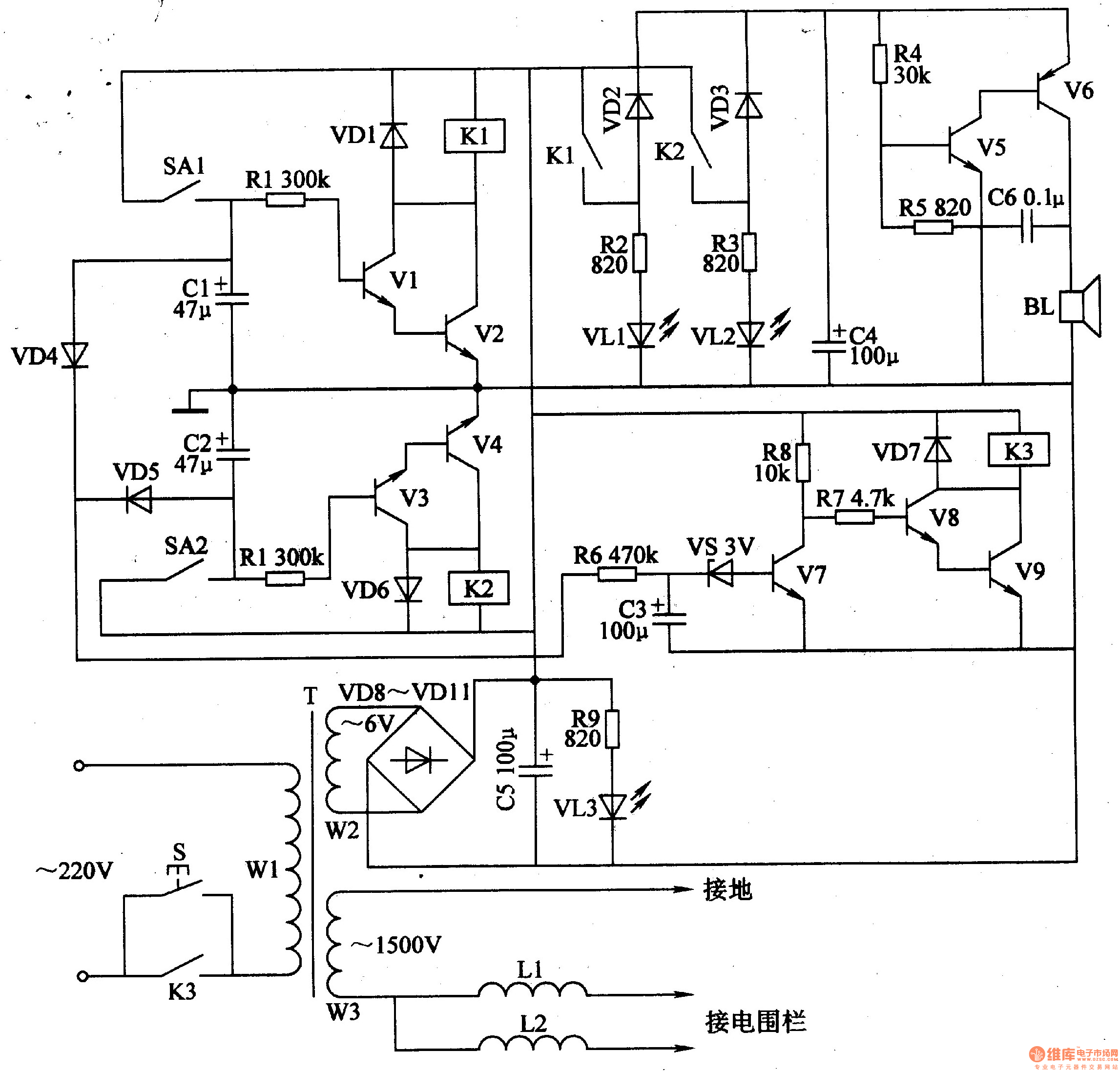
The electric fence control circuit includes a +6 V power supply circuit, a high-voltage output circuit, a trigger control circuit, an alarm circuit, and a protection circuit. The +6 V power supply circuit consists of a power control button (S), a power transformer (T), rectifier diodes (VD8-VD11), a filter capacitor (C5), and a current-limiting component.
The electric fence control circuit operates by utilizing a +6 V power supply to facilitate the functioning of its various components. The power control button (S) serves as the primary switch, allowing the operator to turn the system on or off. The power transformer (T) steps down the voltage from the main supply to the required level, ensuring safe operation of the circuit.
Rectifier diodes (VD8-VD11) are employed to convert the alternating current (AC) output from the transformer into direct current (DC), which is essential for powering the circuit. The filter capacitor (C5) smooths out any ripples in the DC output, providing a stable voltage to the subsequent circuits.
The high-voltage output circuit generates the necessary voltage to create an electric charge along the fence line, deterring intruders. The trigger control circuit monitors the fence's integrity, activating the high-voltage output when a breach is detected. The alarm circuit provides audible or visual signals to alert the property owner of any unauthorized access attempts.
Finally, the protection circuit safeguards the entire system from overcurrent and voltage spikes, ensuring reliability and longevity of the electric fence control circuit. This comprehensive design ensures effective operation, safety, and ease of use for electric fencing applications.The electric fence control circuit is composed of the +6 V power supply circuit, high-voltage output circuit, trigger control circuit, alarm circuit and protection circuit, and it is shown in Figure 4-30. +6 V power supply circuit is composed of the power control button S, power transformer T, rectifier diodes VD8-VDll, filter capacitor C5, current-limiting..
🔗 External reference
The electric fence control circuit operates by utilizing a +6 V power supply to facilitate the functioning of its various components. The power control button (S) serves as the primary switch, allowing the operator to turn the system on or off. The power transformer (T) steps down the voltage from the main supply to the required level, ensuring safe operation of the circuit.
Rectifier diodes (VD8-VD11) are employed to convert the alternating current (AC) output from the transformer into direct current (DC), which is essential for powering the circuit. The filter capacitor (C5) smooths out any ripples in the DC output, providing a stable voltage to the subsequent circuits.
The high-voltage output circuit generates the necessary voltage to create an electric charge along the fence line, deterring intruders. The trigger control circuit monitors the fence's integrity, activating the high-voltage output when a breach is detected. The alarm circuit provides audible or visual signals to alert the property owner of any unauthorized access attempts.
Finally, the protection circuit safeguards the entire system from overcurrent and voltage spikes, ensuring reliability and longevity of the electric fence control circuit. This comprehensive design ensures effective operation, safety, and ease of use for electric fencing applications.The electric fence control circuit is composed of the +6 V power supply circuit, high-voltage output circuit, trigger control circuit, alarm circuit and protection circuit, and it is shown in Figure 4-30. +6 V power supply circuit is composed of the power control button S, power transformer T, rectifier diodes VD8-VDll, filter capacitor C5, current-limiting..
🔗 External reference
